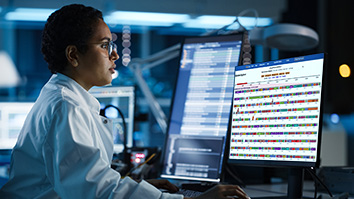Citation
Riley, M., and Abe, T., and Arnaud, M.B., and Berlyn, M.K.B., and Blattner, F.R., and Chaudhuri, R.R., and Glasner, J.D., and Horiuchi, T., and Keseler, I.M., and Kosuge, T., and Mori, H., and Perna, N.T., and Plunkett, G.3rd, and Rudd, K.E., and Serres, M.H., and Thomas, G.H., and Thomson, N.R., and Wishart, D., and Wanner, B.L. Escherichia coli K-12: a cooperatively developed annotation snapshot 2005. Nucleic Acids Research, vol. 34, no. 1, pp. 1-9, 2006.
Abstract
The goal of this group project has been to coordinate and bring up-to-date information on all genes of Escherichia coli K-12. Annotation of the genome of an organism entails identification of genes, the boundaries of genes in terms of precise start and end sites, and description of the gene products. Known and predicted functions were assigned to each gene product on the basis of experimental evidence or sequence analysis. Since both kinds of evidence are constantly expanding, no annotation is complete at any moment in time. This is a snapshot analysis based on the most recent genome sequences of two E.coli K-12 bacteria. An accurate and up-to-date description of E.coli K-12 genes is of particular importance to the scientific community because experimentally determined properties of its gene products provide fundamental information for annotation of innumerable genes of other organisms. Availability of the complete genome sequence of two K-12 strains allows comparison of their genotypes and mutant status of alleles.


